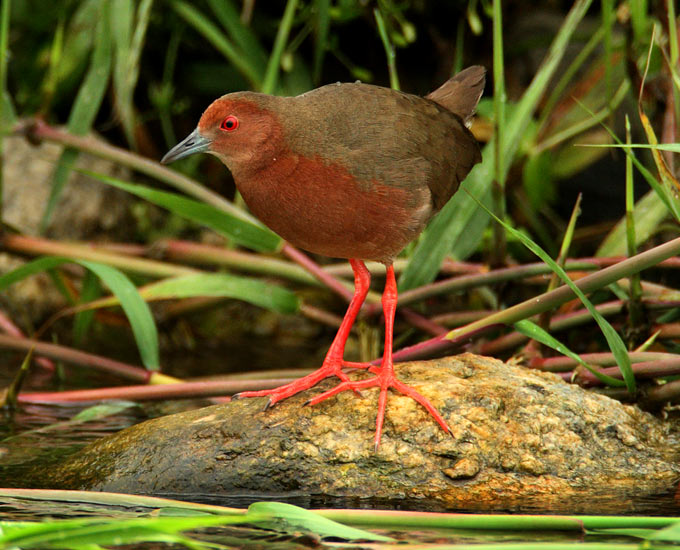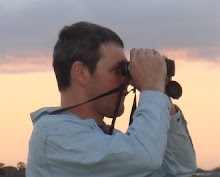
Common Kingfisher (Alcedo atthis).
Photo credit: Cards Unlimited
This summer (2010), I spent about four weeks in Taiwan visiting in-laws. Although I did not get the opportunity to bird extensively as I would have liked, I did manage to sneak some time in.
I essentially used two field guides during the trip: Mark Brazil’s Birds of East Asia (which I previously reviewed), and Wu Sen-Hsiong's Field Guide to the Wild Birds of Taiwan. In addition to field guides, I also made use of publicly accessible field recordings from the Macauley Library.
I also picked up several excellent photographic guides while in Taiwan: Taiwan Birds (Owl Publishing), Photo Guide to the Wild Birds of Taiwan by Jason Chen, and A Photographic Guide to Birds of Taiwan (Taiwan Wild Bird Society).

Taiwan Birds (Owl Publishing)

Photo Guide to the Wild Birds of Taiwan by Jason Chen

A Photographic Guide to Birds of Taiwan (Taiwan Wild Bird Society)
The first two books are entirely in Chinese, except for Latin and common names; however, they both are worthwhile to have. The photos in the book by Owl Publishing are not the best, but the book has excellent range maps for Taiwan. Jason Chen’s book has the best photos among the three. The pictures are large and usually have several photos per bird. The book published by the Taiwan Wild Bird Society has good photos, but the photos are small and there is typically only one. The advantage of the book is that it is written in English and gives detailed descriptions of habitat, behavior and distribution.
Birding in Daliao
.jpg)
Emerald Dove (Chalcophaps indica).
Photo credit: Tamilnadu
I did most of my birding in Daliao (Kaohsiung County), as on previous trips. The campus of the Taiwan Military Academy is about a half mile from my in-laws home. Behind the campus is a wooded area used for training exercises. The locals also use it as a community garden and park. The habitat is mostly low hills that were largely overtaken by grasslands and bamboo thickets, with a few hardwood trees scattered about. It’s a haven for birds, as Daliao is a fairly well developed area. The grounds of the military academy are sort of like a forested island in the middle of a mixed urban and agricultural area.
Over the course of my stay, I observed 33 species on the campus, including three lifers (Crested Goshawk, Emerald Dove & Striated Swallow). I also observed a small flock of Indian Silverbill. I have seen them before in Dubai, but never in Taiwan. The Silverbill are not native to Taiwan. They have only recently become established there, probably due to escapes from the songbird trade which is fairly prominent in Taiwan.

Chinese Bamboo Partridge (Bambusicola thoracicus)
Image Credit: Stip Hushan Dam!
Another highlight was the Chinese Bamboo-Partridge. I have heard the Bamboo-Partridge there many times. The call is distincitive - no mistaking it for anything else (listen here). There is one particularly densely wooded hill adjacent to the rifle range that seems to be favored by the partridge. I used my iPod to call them in. Only had to play the call twice before they all came to investigate. I saw two running in the grass, but they quickly took cover and I didn't get a clean look. The third one popped up on a stump and started calling vociferously. He stayed a good 7 or 8 minutes before dropping down out of sight. It was all pretty exciting.
Here is a list of my observations:
Chinese Bamboo-Partridge
Great Egret
Cattle Egret
Crested Goshawk *
White-breasted Waterhen
Common Moorhen
Barred Buttonquail
Oriental Turtle-Dove
Red Collared-Dove
Spotted Dove
Emerald Dove *
Lesser Coucal
House Swift
Black-browed Barbet
Black Drongo
Black-naped Monarch
Gray Treepie
Barn Swallow
Pacific Swallow
Striated Swallow *
Collared Finchbill
Light-vented Bulbul
Golden-headed Cisticola
Yellow-bellied Prinia
Plain Prinia
Vinous-throated Parrotbill
Streak-breasted Scimitar-Babbler
Japanese White-eye
Common Myna
Eurasian Tree Sparrow
Indian Silverbill
White-rumped Munia
Nutmeg Mannikin
Rice Paddies

Ruddy-breasted Crake (Porzana fusca).
Photo credit: Robin Newlin, Birds Korea
There are also a number of small farms and rice paddies scattered through Daliao, as they are just about everywhere in Taiwan. The rice paddies are home to a variety of waders, rails, etc. In addition, Taiwanese farmers harvest and replant rice three times a year. The end of July is one of those times. As a result, many of the rice paddies are temporarily converted into mudflats – a favored habitat among migrating shorebirds. The beginning of August is not the best time for migrants, but there are a few early migrants that do show up from time to time. Another great spot for waders is the wetlands adjacent to the Old Railroad Bride Park in Fongshan; however, I was unable to bird there, as the wetlands were destroyed by mudslides last year during typhoon season. Its quite a tragic loss considering that the wetlands were one of the few breeding spots for the Pheasant-tailed Jacana in Taiwan.
Several times a week, I hauled my spotting scope and tripod around Daliao to check out the rice paddies. Early morning and just before sunset are the best times to go, particularly if you want to avoid the hot tropical sun. Another good time is the morning after a heavy evening thunderstorm. During the course of my birding adventures, I observed 32 species in the rice paddies, including six lifers (Cinnamon Bittern, Ruddy-breasted Crake, Green Sandpiper, Common Kingfisher, Common Hill Myna & Javan Myna).
Yellow Bittern
Cinnamon Bittern *
Intermediate Egret
Little Egret
Cattle Egret
Black-crowned Night-Heron
White-breasted Waterhen
Ruddy-breasted Crake *
Common Moorhen
Little Ringed Plover
Green Sandpiper *
Wood Sandpiper
Long-toed Stint
Greater Painted-snipe
Red Collared-Dove
Common Kingfisher *
Gray Treepie
Eurasian Magpie
Plain Martin
Barn Swallow
Pacific Swallow
Striated Swallow
Light-vented Bulbul
Zitting Cisticola
Yellow-bellied Prinia
Plain Prinia
Common Hill Myna *
Javan Myna *
Common Myna
White Wagtail
Eurasian Tree Sparrow
Nutmeg Mannikin
Field Trips

Savanna Nightjar (Caprimulgus affinis).
Photo credit: Jemi & John Holmes
In addition to local birding, I also made two field trips to Kenting National Park at the southern tip of Taiwan, and to Dawushan in eastern Kaohsiung. I have been to Kenting a number of times over the years. Overall, I have been disappointed with the birding in the park. The only bright spot I can recommend is the Longluan Lake area. I spent about 2 hours in the park adjacent to the lake. I observed about 20 species. The highlights were an Osprey, my first in Taiwan, and several Black-naped Terns. I also heard a Hwa-mei calling, but I was unable to pish it out.
It rained during the Dawushan trip so I didn’t see too much during that outing other than a small flock of Grey-cheeked Fulvetta and few circling Silverback Needletails, the latter of which was a lifer. In fact, I spent most of the time on Dawushan ot a mountain coffee plantation drinking iced coffee and watching the storm roll through the valley. On the way home, we stopped in Fongshan to eat. While waiting to get seated, I heard a strident screech above (listen here). I looked up and saw two Savanna Nightjars circling overhead. Quite impressive birds. Although they are roughly the same size, they seem larger and louder than our Common Nighthawks, probably because they spread their primary feathers during flight like some raptors. My brother-in-law says the locals call them Night Eagles.
Here are my observations:
Gray Treepie
Eurasian Tree Sparrow
Common Myna
Black-naped Monarch
Black Drongo
White-breasted Waterhen
Striated Swallow
Spotted Dove
Streak-breasted Scimitar-Babbler
Red Collared-Dove
Pacific Swallow
Lesser Coucal
Little Egret
Savanna Nightjar *
Styan's Bulbul
Black-naped Tern
Gray-cheeked Fulvetta
Silver-backed Needletail *
Hwamei
Indian Spot-billed Duck
Osprey
Black-browed Barbet
Black Bulbul
In all, I observed 61 species, 11 of which were lifers for me. The overall highlight of the trip was birding around the rice paddies. Finding birds there sometimes requires a lot of patience, and a bit of being in the right place and the right time (when birds flush). There were also some disappointment. There were several of the less common rails that I was unable to find. I also didn't get the chance to observed birds during the peak of migration. Hopefully, I be able to get some of these birds on a future trip.



4 comments:
Wow, Joe! I often wonder if people from other countries--countries whose birds are so colorful--look at our birds and say, "wow, their birds are so colorful!" You know what I mean?
Thanks for the comments Delia. I know exactly what you mean about the birds here in the US. I think the birds in the US are among the best in the world. Every time I am away from home for awhile, I am really struck by the beauty of the birds when I return home. I think that seeing them everyday sorta leads one into taking them for granted. When you step back and consider some of the "common" birds we have here, like the American Robin, Northen Cardinal, Chipping Sparrow, and all the Wood-Warblers, they are certainly among the most striking birds you will see anywhere.
I saw a bird just outside Taipei that looked almost exactly like a black-headed grosbeak. I'd love to know what it was. Online field guides for Asia aren't exactly erupting all over the web. Actually, I don't even think there's an English-friendly birding society in Taiwan. Ain't it a shame.
very nice photo!
Post a Comment